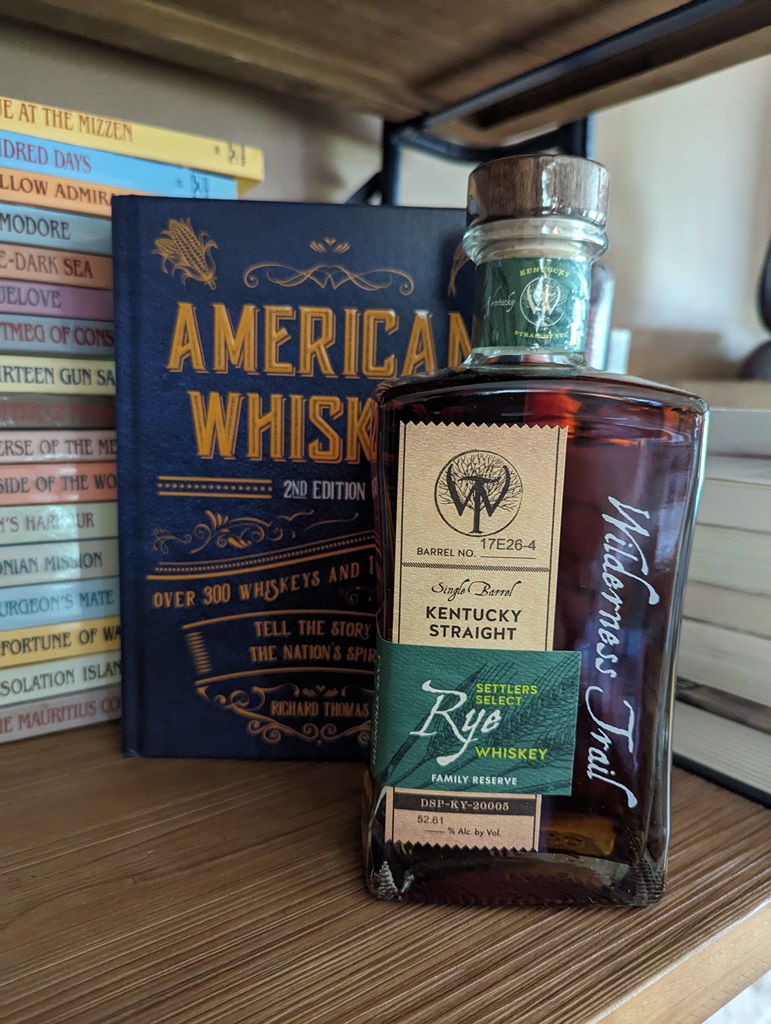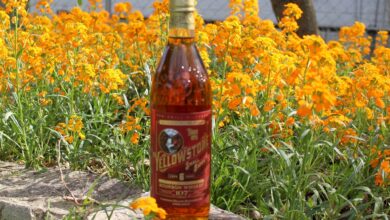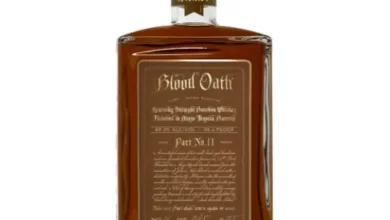What Is A Bourbon Shortage Anyway?
A Rebuttal To Fred Minnick
By Richard Thomas
A few weeks ago, Whisky Advocate magazine did a two-part point/counter-point series on their blog, with Chuck Cowdery adopting the position (similar to The Whiskey Reviewer’s own) that the bourbon shortage is mostly yellow journalism, or “clickbait” as he called it. Fred Minnick took the contrary pose, that the shortage is very real and permeates the premium bourbon sector.
In doing so, he moved past the method so typical of most bourbon shortage scare articles, that of citing only Buffalo Trace’s annual announcement of their supply problems as evidence, by trying to paint a much larger picture. For that he is to be applauded, but unfortunately for Minnick sweeping with a bigger broom didn’t actually prove his case. Looking at his evidence with an educated eye, in fact, shows he was little closer to doing so than the previous “clickbait” yellow journalism.
Statistical Gimmickery
In the aforementioned blog, Minnick commented on how “nobody has provided statistical data to show the depths of this shortage,” and spent the large majority of that blog discussing two surveys he presented as hard evidence intended to plug that gap. The problem is that at least one of those surveys was seriously flawed, while the other he admitted was incomplete.
For starters, the market studies I’ve seen show approximately 40 million Americans regularly drink bourbon. A random survey would need poll at least a few thousand for reasonable accuracy, and a poll carefully structured to represent the larger population would need to reach few hundred. Thus, Minnick’s survey was too small to meet either criterion. We also know it wasn’t representative of the larger population, because the demographic data he provided was moderately askew from the results of other studies.
And I’m not alone in finding fault with Minnick’s studies. Upon studying the available details, Kara Normal Hill, who holds an MS in statistics and a PhD in risk analysis, said, “It showed that of 149 people with very specific demographics and geographies all had an opinion that was the same.” Hill went on to say that if she designed a survey of educated young women from the northeast, “then everyone would roll their eyes if I thought my survey confirmed or concluded that everyone loved Obama or that there was an increase in Democrats.”
Thus, instead of a hard, reliable consumer survey, what Minnick actually presented was a collection of stories that presumably came out of calling up 149 friends, acquaintances and colleagues, and most of them unsurprisingly agreed with his point of view. This is not to say that Minnick’s consumer study has no value, but it does not measure up to the role of plugging the statistical gap in the way Minnick claimed.
As for the incomplete liquor store survey results, these were unremarkable as presented. Claiming Buffalo Trace’s woes as the bulk of proof for the shortage does not go very far beyond the yellow “clickbait” articles of that heretofore have dominated the mainstream media, and cast little in the way of new light on the issue.

(Credit: Jim Beam)
But My Go-To Bourbon Went NAS!
Another point Minnick made was that many expressions have gone from from having age statements to having no age statements (NAS). The example that is the present focus of the doom and gloom shortage crowd, Minnick included, is Jim Beam Black. “Gasp,” many of the doom and gloom crowd whisper in terror. “If Jim Beam Black is going NAS, surely everything must be in danger!”
Yet the story is not that simple, and rarely is. Take what is going on across the Pond with several single malt Scotch brands, such as The Macallan and The Glenlivet, who have withdrawn age statement expressions from certain markets, replaced them with NAS whiskies, and concentrated the old age statement-based expressions in the U.S.
In Europe they are screaming “shortage!” over this, when what they ought to be screaming is “foul,” because these are not straight cases of demand outstripping supply. Instead, it is a choice to reallocate supply so as to expand their sales in the U.S., the world’s biggest whiskey market. The way I usually put it is that what The Macallan and The Glenlivet did was rob Peter in hopes that Paul would pay them more later.
Likewise, one has to wonder if Jim Beam’s supply of middle aged whiskey is really being guzzled down to nothing when they are currently introducing new products that draw on that same middle aged stock. Jim Beam Black went NAS during same period that Jim Beam released a basket of new products, including the 12 Year Old Jim Beam Signature Craft, and announced the future release of still more new whiskeys.
After seeing this bigger picture, one must conclude this NAS business is as much about chasing new customers and juggling supply among a widening line of products as it is about raw demand outstripping supply. If there really was a shortage as severe as folks like Minnick would have us believe, Beam simply would not have the stock to introduce all these new aged products. They certainly were not conjured from the Angel’s Share, and in a true shortage scenario the NAS adjustment would come without them.
Hard Economics
In the wake of Minnick’s blog, numerous other bloggers got on his bandwagon and sang the same tune in harmony, and that tune was woefully incorrect: “It’s economics that when demand exceeds supply, you have a shortage!”
As any student in a basic macroeconomics class knows, that is only half of the definition. To an economist, the complete statement might read “If supply cannot meet demand and this creates a market disequilibrium, you have a shortage.” That disequilibrium part is critical, because it means that you have a shortage only when market tools, such as allocation and pricing, fail to right the imbalance between demand and supply. Blogger Professor Cocktail offered a clear, sound explanation of how this works with pricing in his own rebuttal to Minnick.
This point is important because it is what separates mere inconvenience from my childhood memories of what 1970s gas lines were like. For an idea of what a scenario like that historic gasoline shortage might look like in American whiskey, look no farther than the very real rye shortage of just a few years ago, when even Old Overholt was hard to find.
What A Shortage Really Looks Like
The sudden rye craze and the genuine shortage it caused are useful both as an example not only of what a truly serious shortage looks like, but also of how one is resolved. The big rye crunch prompted the import of some very good rye whiskey from Canada, such as WhistlePig and Masterson’s, as well as the rapid expansion of rye whiskey production in the United States.
The result is that the rye whiskey shortage has been steadily receding, so much so that Jim Beam was recently able to relaunch its staple Jim Beam Rye at higher proof. The general shortage of rye as a broad, deep phenomenon is over.
By contrast, the expressions that most frequently come up in connection with the bourbon shortage are from only one distillery, Buffalo Trace. It’s hardly a coincidence that this distillery was also the last of the Kentucky majors to start an expansion program.
Buffalo Trace presents the most extreme example of a distillery facing a supply pinch, and yet even this extreme example, in and of itself, still does not match the sheer scarcity of rye whiskey just five years ago. What is happening with bourbon now really does not compare to the rye shortage, and the comparison of these two recent events eludes literally everyone riding on the bourbon shortage scare bandwagon.
Besides, while some folks from the bourbon majors (sans Buffalo Trace) might sometimes whisper about supply troubles, those same people and more speak very openly and frequently of their concerns that the whiskey boom might suddenly implode and leave them sitting on top of an ocean of whiskey no one wants. That speaks to the real hierarchy of worry in the industry today.
You Say Tomato…
I think much of the argument as to whether there is a bourbon shortage going on hangs on what a particular pundit defines as a shortage. As described above, when I think “shortage” I think 1970s gas lines, the wartime rationing I’ve read about in books, or the rolling black-outs I experienced in India. I might also think of what happened when the sudden craze for rye whiskey caught the American whiskey industry unprepared, oftentimes wiping the entire category from store shelves.
What I do not think of are the moderate inconveniences confronting some bourbon fans today. A particular whiskey not being on every liquor store shelf all of the time isn’t a shortage, nor is not being able to procure Four Roses Single Barrel Limited Edition at the drop of a hat.
Certainly times have changed for whiskey lovers everywhere, but calling what is going on now a shortage serves only one function: yellow clickbait. Whiskeygeddon is not around the bend.




Wow. You really demolished that guy. Impressive!
Agreed. There was a time last year when I could get Weller 12, but otherwise this whole shortage BS seems limited to Pappy and Four Roses Limited Edition stuff. Stuff runs out of stock in real life. If you can go a few blocks over and get it at another store, that is an accident, not a catastrophe.
So Minnick can’t get his Pappy or Four Roses specials. So what? That stuff was always released in like four digit numbers anyway, so as soon as he and his pals started writing articles about it for the newspapers, it was sure to disappear. He should blame himself!
As for other stuff, it’s all BS. I couldn’t believe the part in his article about people not being able to find basic Jim Beam. WTF? That is an indication they are clueless, not that there is a shortage.